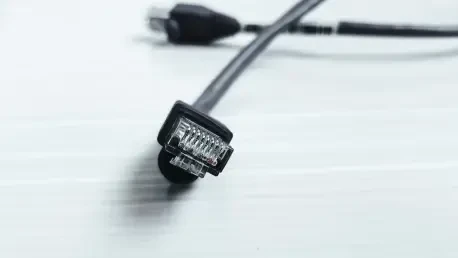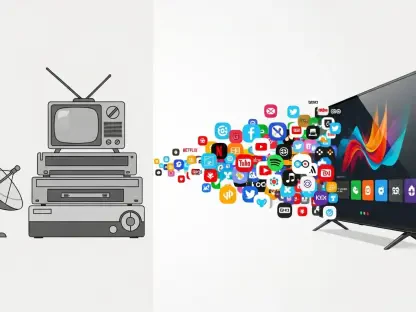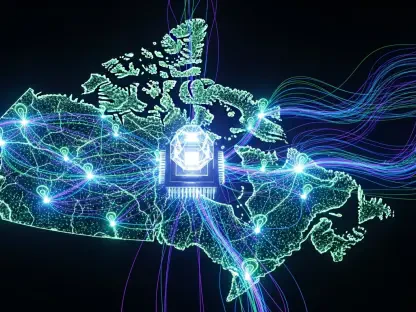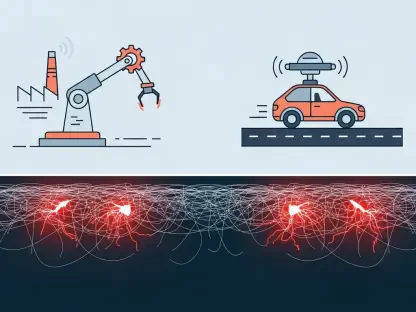In a digital era where connectivity is key, the cost of internet and cable services has become a significant concern for many American households. According to recent findings by doxoINSIGHTS, these expenses collectively amount to an overwhelming $164 billion annually, representing 4% of all household bill payments across the nation. With 73% of households tied to these essential utilities, reliance on such services underscores the growing economic challenge they present. The median monthly cost sits at $121, suggesting a yearly outlay of approximately $1,063 per household. However, this financial strain is not evenly distributed. Certain states like South Dakota and Tennessee find themselves on the higher end of the cost spectrum. Additionally, urban areas such as Milwaukee experience even steeper bills, indicating a notable divergence in regional cost burdens.
Factors Driving Costs
The Ubiquity of High-Speed Connectivity
The escalating costs of internet and cable services are intrinsically linked to the near-universal demand for high-speed connectivity, which has transformed from a luxury into a necessity. As work environments pivot towards remote opportunities and entertainment shifts predominantly online, the role of high-speed internet is indispensable. Furthermore, integrating smart technologies into everyday life only compounds the need for robust and reliable internet connections. Consumers’ rising expectations and dependency on digital platforms drive providers to continually upgrade infrastructure, investing in technologies that enhance speed and consistency. This increase in demand and subsequent technological advancements inevitably reflect rising expenses for consumers.
Potential Impact of Tariffs and Competition
The potential imposition of tariffs on broadband equipment looms as a significant factor that could elevate costs even further. Should these tariffs come into effect, the economic repercussions could be substantial for service providers, subsequently impacting the prices consumers pay. Meanwhile, emerging wireless broadband alternatives inject a promising element into the market dynamics. By fostering increased competition, these alternatives have the potential to disrupt traditional pricing structures, offering more affordable options to consumers. This shift could herald a period where competitive pricing models lead to more accessible services, potentially alleviating the financial burden currently felt by many households.
Addressing Household Financial Strain
Internet as a Core Utility: Economic Consequences
The entrenched status of high-speed internet as a core utility undeniably strains household budgets, particularly for lower-income families. This classification necessitates priority allocation in financial planning as ignoring it can result in significant lifestyle disruptions. Consequently, households find themselves adjusting other expenditures to accommodate this essential service. The economic burden manifests glaringly among families already navigating financial challenges, thereby amplifying disparities in digital access. This scenario compels stakeholders to explore ways of easing the financial load, advocating for initiatives that democratize access and affordability.
Transparency and Accessibility: Pathways to Relief
Enhancing transparency in billing practices emerges as a critical pathway toward addressing escalating costs. Clear, straightforward billing allows consumers to better manage expenses, identifying unnecessary charges or potential areas for savings. Inclusion of cost-effective wireless options in the market holds promise for leveling the playing field, providing competitive pressure that tempers price inflation. By integrating these wireless solutions into mainstream offerings, the telecommunications industry can introduce broader accessibility, enabling more households to partake in digital connectivity without a prohibitive financial barrier. This strategy promotes long-term affordability, fostering inclusive participation in the digital economy.
Navigating the Future of Connectivity Costs
The rising costs of internet and cable services are closely tied to the almost universal need for high-speed connectivity, which has shifted from being a luxury to becoming an essential part of everyday life. With more businesses embracing remote work setups and entertainment options moving largely online, high-speed internet is now crucial. Additionally, the growing integration of smart technologies in daily routines intensifies the demand for strong and consistent internet connections. As consumers increasingly depend on digital platforms, they expect higher performance, prompting service providers to continuously improve their infrastructure. These companies are investing heavily in technologies designed to boost internet speed and reliability. This surge in demand, combined with technological upgrades, naturally results in higher expenses for consumers. The relationship between consumer demands, technological progress, and subsequent price hikes highlights the complex dynamics at play in the modern digital landscape.









